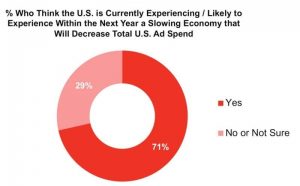How to avoid over-specialization and the bottle-necks it creates.
Successful agile marketing teams have one very important thing in common — cross-functional team members that have the ability to take campaigns from strategy to execution. This allows them to stop waiting and start delivering at a much faster pace than traditional marketing teams.
These successful teams have the right combination of people to deliver the work promised to customers and stakeholders, as well as having at least a portion of the team that can dip into one or two areas to help outside of their primary job function.
I spend part of my week as a team member for a Scrum training company. There are three roles on this team — instructor, teaching assistant and producer. My role is normally the teaching assistant, but I have the ability to step in and teach or produce.
Just last week, the producer experienced technical difficulties and I was able to jump in and take over that job. If we didn’t have the ability to flex in our roles, it would’ve been a bad experience for our customers, the students.
Another time the instructor lost the internet, and I stepped in and taught the class. This allowed us to continue the class, whereas it may have resulted in needing to reschedule, which would have been a huge inconvenience to our customers.
In marketing, a cross-functional team member doesn’t mean that person has to be a marketing generalist, but rather has the ability to help the team and keep them from getting stuck in a holding pattern. You may still have team members who are specialists — you just don’t want everyone to be overly specialized or the team will find itself easily blocked.
You can stop waiting for days (or weeks) for another department
In traditionally formed marketing organizations, we created silos. While these silos were great for building up domain knowledge, they created a huge problem — the waiting game.
The waiting game goes something like this.
A manager comes up with a campaign idea for the launch of a new consumer healthcare app and passes it down to a research team. The research team spends a month conducting consumer and market research. It then goes to the design team for another month of concepts, approvals and revisions. Once design is done, it goes to the copywriting team for a month, then it goes through several more rounds of approvals, and so on and so forth.
With an agile team, one of the biggest benefits is having all (or at least the majority) of players all in one team that can do all of those things — strategize, research, design, write, edit and review.
What this allows the team to do is eliminate the need to get into another department’s queue. This waiting or ‘waste’ is simply idle time as we pass along the project from one group to another.
So now the team, without taking on any more work or burning the candle at both ends, can deliver so much faster because all of the right people are there to coordinate the project, make decisions, review each other’s work and get it out the door.
The team is no longer bottle-necked
Even with a team filled with people from many different specialties, if they’re too specialized the team will get bottle-necked. When team members are able to develop T-shaped skills, meaning they have a solid base in one area of marketing, but are able to help in a few more, the team has fewer instances where it gets bottle-necked.
If you’re a copywriter who can do some basic design and help with editing, you can help your team get work past the finish line when the editor is on vacation or the designer is overloaded.
Read more about agile marketing from Stacey Ackerman.
I once coached a team that had a graphic designer that was the ‘expert,’ and only this person was allowed to touch the design. While she was definitely the best designer, the team found itself often starting work, but never finishing because she was the bottle-neck.
By taking a little more time to cross-train other team members with some basic design skills, they could have kept work moving, reducing the risk that all work would stop if she was sick or left the team.
Earlier delivery gets inventory off of the shelf
Our viewpoints around work need to change. It doesn’t matter who individually worked the most hours, or who was the busiest. If our marketing campaigns get stuck at 80% done, we have an inventory problem. We’re basically leaving inventory on the shelf, and guess what — inventory that sits on the shelf doesn’t pay our salaries.
By creating teams from different functional areas and allowing team members to develop T-shaped skills, you’ll get that inventory off of the shelves and into the hands of your customers in no time.
This story first appeared on MarTech Today.
Opinions expressed in this article are those of the guest author and not necessarily Marketing Land. Staff authors are listed here.
Marketing Land – Internet Marketing News, Strategies & Tips
(11)
Report Post






